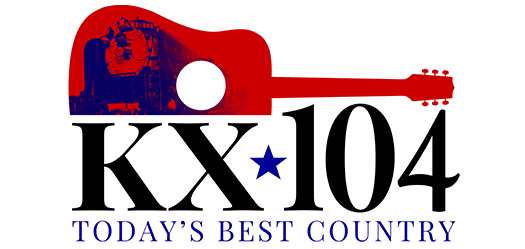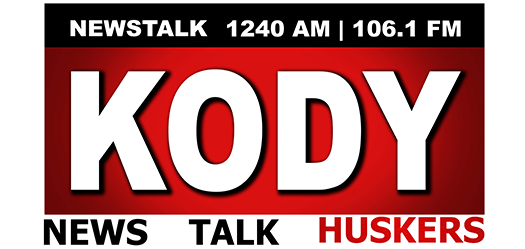
OMAHA, Neb. (July 20, 2023) — After declining below growth neutral in March, the overall Rural Mainstreet Index for July expanded above the threshold for a fourth straight month, according to the July monthly survey of bank CEOs in rural areas of a 10-state region dependent on agriculture and/or energy.
Overall: The region’s overall reading in July slipped to 55.6 from June’s 56.9. The index ranges between 0 and 100, with a reading of 50.0 representing growth neutral.
“After negative growth during the first quarter of this year, the Rural Mainstreet economy experienced positive but slow economic growth for the second quarter and has now started the third quarter on a healthy note,” said Ernie Goss, PhD, Jack A. MacAllister Chair in Regional Economics at Creighton University’s Heider College of Business.
Farming and ranching land prices: The region’s farmland price index rose to 64.6 from 59.3 in June and 56.3 in May. This was the 34th straight month that the index has advanced above 50.0.
Bankers reported that, on average, non-farm investors secured approximately 17.1% of farmland sales in their area over the past six months. This is almost double the 9.1% reported by bankers in April 2022 when the same question was asked.
Farm equipment sales: The farm equipment-sales index for July stood at a tepid 50.0, which was up from 48.3 in June. “Higher borrowing costs have begun to negatively impact purchases of farm equipment,” said Goss.
Banking: The July loan volume index declined to a still strong 75.9 from June’s 79.2. The checking deposit index sank to 32.7 from 37.5 in June, and the index for certificates of deposit and other savings instruments decreased to a vigorous 71.2 from 76.8 for June.
Bank CEOs were asked to comment on the Federal Reserve’s current short-term interest rate policy. More than nine of ten, or 92.5%, indicated that the Fed should cease raising rates. Only 7.5% indicated that the Fed should continue to raise short-term interest rates.
“Higher short-term interest rates produced by Federal Reserve’s rate hikes over the past year have posed a significant threat to community banks by expanding the costs of customer deposits while the rates on bank loans have risen little over the same time period,” said Goss.
Despite the loss of 40-45% of community banks during the last financial crisis in 2008-09, Treasury Secretary Janet Yellen has backed policies that encourage more mergers and acquisitions in the banking sector. More than three-fourths of bankers expect that such a policy would be damaging to community banks and to the farm economy served by the banks.
Hiring: The new hiring index for July climbed to 59.3 from June’s 58.9. Over the past 12 months, the Rural Mainstreet Economy has expanded jobs by 2.3% compared to a lower 1.6% for urban areas of the same 10 states.
Confidence: Higher interest rates, deposit outflows and a rising regulatory environment continued to constrain the business confidence index to a weak 44.4, up from 43.1 in June. “Over the past 12 months, the regional confidence index has fallen to levels indicating a negative outlook,” said Goss.
Home and retail sales: July home sales rose to 55.8 from June’s 48.2. “Despite higher mortgage rates, an increase in the housing inventory boosted sales across the region,” said Goss.
The retail-sales index for July expanded to a healthy 59.6 from June’s 56.9. “After an OK second quarter, bankers are getting more optimistic regarding the economic outlook for retail sales for the third quarter,” said Goss.
The survey represents an early snapshot of the economy of rural agriculturally and energy-dependent portions of the nation. The Rural Mainstreet Index is a unique index covering 10 regional states, focusing on approximately 200 rural communities with an average population of 1,300. The index provides the most current real-time analysis of the rural economy. Goss and Bill McQuillan, former Chairman of the Independent Community Banks of America, created the monthly economic survey and launched it in January 2006.
Below are the state reports:
Colorado: Colorado’s RMI for July climbed to a strong 65.7 from June’s 63.4. The farmland- and ranchland-price index for July rose to 66.4 from 57.5 in June. The state’s new hiring index was 61.9 from 57.5 in June. Colorado’s average unadjusted private hourly wages expanded by 2.8% over the past 12 months (fifth in the 10-state region), while average inflation-adjusted wages slumped by 0.9% during this same time period.
Illinois: The July RMI for Illinois improved to 59.0 from June’s 55.8. The farmland-price index climbed to 64.5 from 57.6 in June. The state’s new-hiring index decreased to 59.6 from 63.5 in June. Illinois’ average unadjusted private hourly wages expanded by 0.5% over the past 12 months (10th in the 10-state region), while average inflation-adjusted wages slumped by 0.9% during this same time period. Jim Eckert, CEO of Anchor State Bank in Anchor said, “Our area has been dry and crops are behind. Recent rains have helped, but the ‘top end’ for yields is gone.”
Iowa: Iowa’s July RMI expanded to 54.1 from 51.7 in June. Iowa’s farmland-price index advanced to 63.1 from June’s 55.6. Iowa’s new-hiring index for July moved higher to 57.9 from 52.4 in June. Iowa’s average unadjusted private hourly wages expanded by 0.9% over the past 12 months (ninth in 10-state region), while average inflation-adjusted wages slumped by 1.3% during this same time period.
Kansas: The Kansas RMI for July dipped to 55.2 from June’s 55.3. The state’s farmland-price index climbed to 63.4 from 57.4 in June. The July new-hiring index for Kansas improved to 58.3 from 54.7 in June. Kansas’ average unadjusted private hourly wages expanded by 2.3% over the past 12 months (sixth in the 10-state region), while average inflation-adjusted wages slumped by 0.3% during this same time period.
Minnesota: The July RMI for Minnesota sank to 53.8 from June’s 54.9. Minnesota’s farmland-price index slipped to 63.0 from 65.8 in June. The new-hiring index for July climbed to 57.8 from 54.6 in June. Minnesota’s average unadjusted private hourly wages expanded by 2.0% over the past 12 months (seventh in the 10-state region), while average inflation-adjusted wages slumped by 0.3% during this same time period.
Missouri: The state’s July RMI dropped to 42.7 from 44.5 in June. The farmland-price index rose to 59.9 from 54.4 in June. The state’s new hiring gauge improved to 53.9 from 50.9 in June. Missouri’s average unadjusted private hourly wages expanded by 8.0% over the past 12 months (first in the 10-state region), while average inflation-adjusted wages improved by 5.6% during this same time period.
Nebraska: The Nebraska RMI slipped to a healthy 60.5 from 62.9 in June. The state’s farmland-price index for July expanded to 64.9 from June’s 59.6. Nebraska’s July new-hiring index dipped to 60.1 from 69.5 in June. Nebraska’s average unadjusted private hourly wages expanded by 3.0% over the past 12 months (fourth in the 10-state region), while average inflation-adjusted wages improved by 0.7% during this same time period.
North Dakota: North Dakota’s RMI for July advanced to 61.7 from June’s 56.8. The state’s farmland-price index climbed to 85.3 from 57.9 in June. The state’s new-hiring index declined to a healthy 60.6 from 64.3 in June. North Dakota’s average unadjusted private hourly wages expanded by 7.6% over the past 12 months (second in the 10-state region), while average inflation-adjusted wages improved by 5.2% during this same time period.
South Dakota: The July RMI for South Dakota slipped below growth neutral to 49.0 from June’s 51.2. The state’s farmland-price index advanced to 61.7 from 55.3 in June. South Dakota’s July new hiring index dipped to a solid 56.1 from 56.3 in June. South Dakota’s average unadjusted private hourly wages expanded by 5.3% over the past 12 months (third in the 10-state region), while average inflation-adjusted wages improved by 2.9% during this same time period.
Wyoming: The July RMI for Wyoming grew to 55.5 from 54.9 in June. The July farmland- and ranchland-price index rose to 63.5 from 57.0 in June. Wyoming’s new-hiring index declined to a solid 58.4 from June’s 61.7. Wyoming’s average unadjusted private hourly wages expanded by 1.6% over the past 12 months (eighth in the 10-state region), while average inflation-adjusted wages slumped by 2.0% during this same time period.






